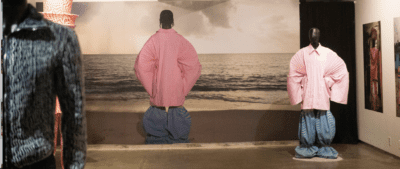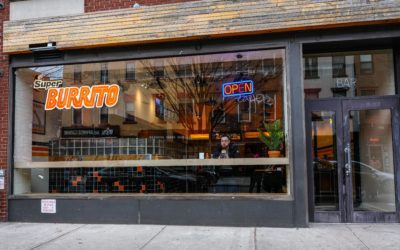A detail of the stage (Photo by Stephanie Keith)
A first look at the Brooklyn Paramount — the borough’s next big venue
The soon-to-reopen theater oozes grandeur — and pays tribute to its historic past
It’s hard not to have a “holy shit” moment while walking into the soon-to-reopen Brooklyn Paramount theater.
Though it was founded in 1928 as an early movie palace that also hosted some of the biggest names in jazz, blues and early rock ’n roll, the building has for decades existed quietly with a gray facade at the corner of the Flatbush Avenue Extension and Dekalb Avenue in Downtown Brooklyn.
It also bore the name of Long Island University, which has owned the property since 1962. After buying it, LIU gradually chopped the building’s insides into administrative offices, classrooms and, somehow, a basketball court.
But these days, there’s a shiny marquee on the outside. And inside, the venue is ready for the spotlight once again as a top-tier concert hall.
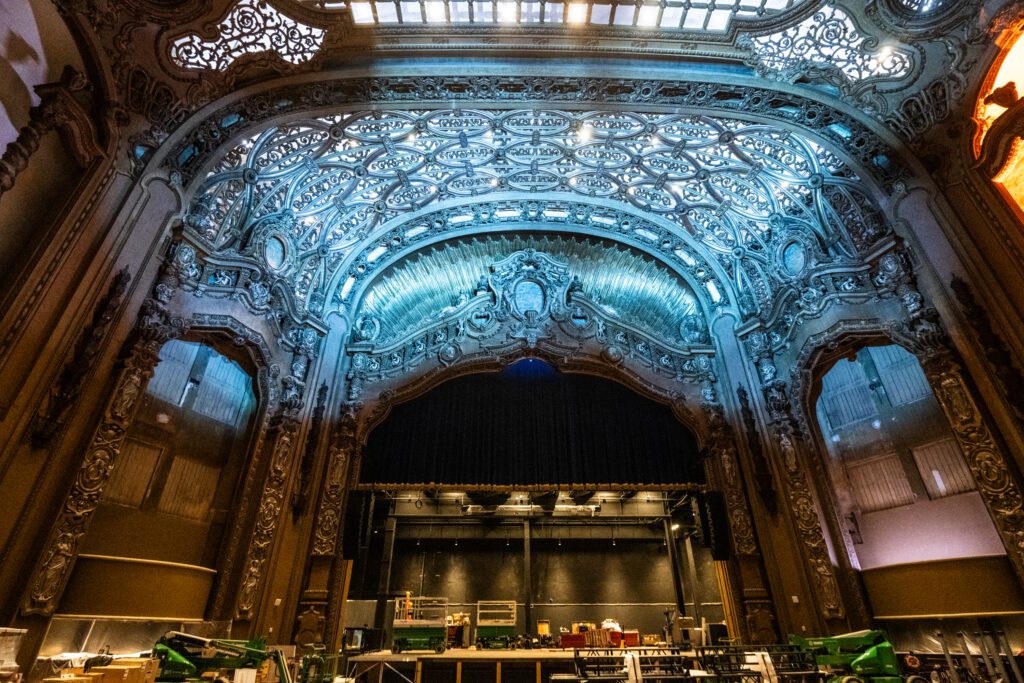
A view of the stage and ceiling from the audience area (Photo by Stephanie Keith)
Brooklyn Magazine recently got a first look at the interior, and even though construction was still finishing up ahead of the venue’s reopening on March 27, the visuals were stunning.
In the main hall, an ornate, 80-foot-tall rococo-style ceiling looks down on a general admission standing room surrounded by lavish Baroque statue figures and other intricate details built into the metallic-looking plaster. It has the aesthetic feel of other theaters built in the same era, like Radio City Music Hall (which opened in 1932) and Brooklyn’s own Kings Theatre (first opened in 1929).
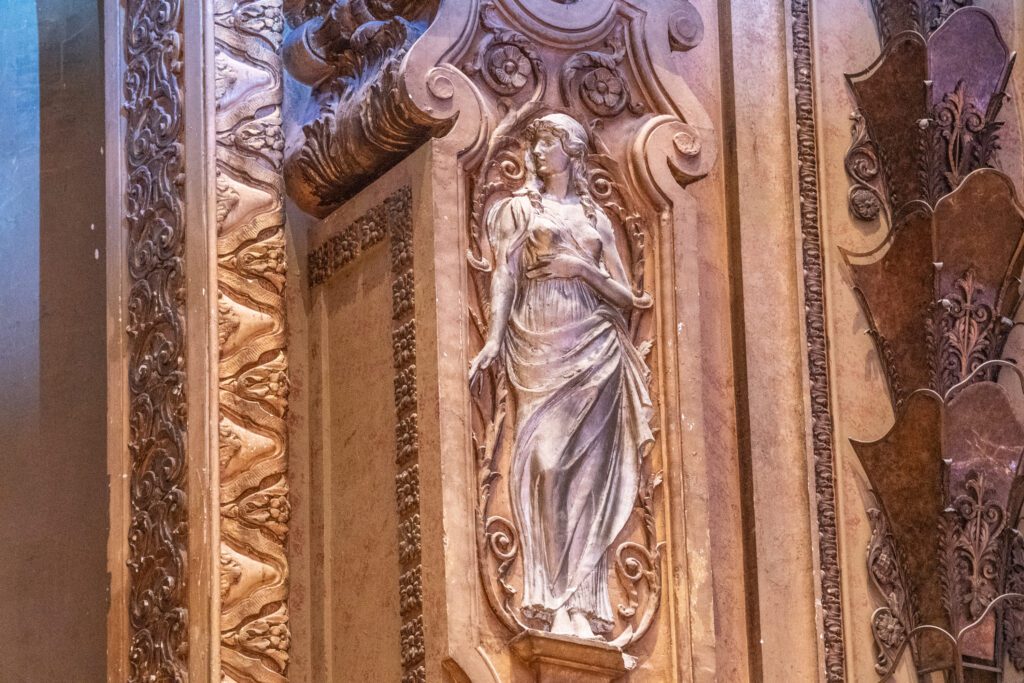

Some of the original ornate detail (Photo by Stephanie Keith)
But while those are well-known, the Brooklyn Paramount has until now been something of a hidden gem. Many will likely have the same reaction while walking in to watch a concert in the near future: “This has been here the whole time?!”
“When people come in and are speechless, that’s what I want,” says Margaret Holmes, the venue’s general manager.
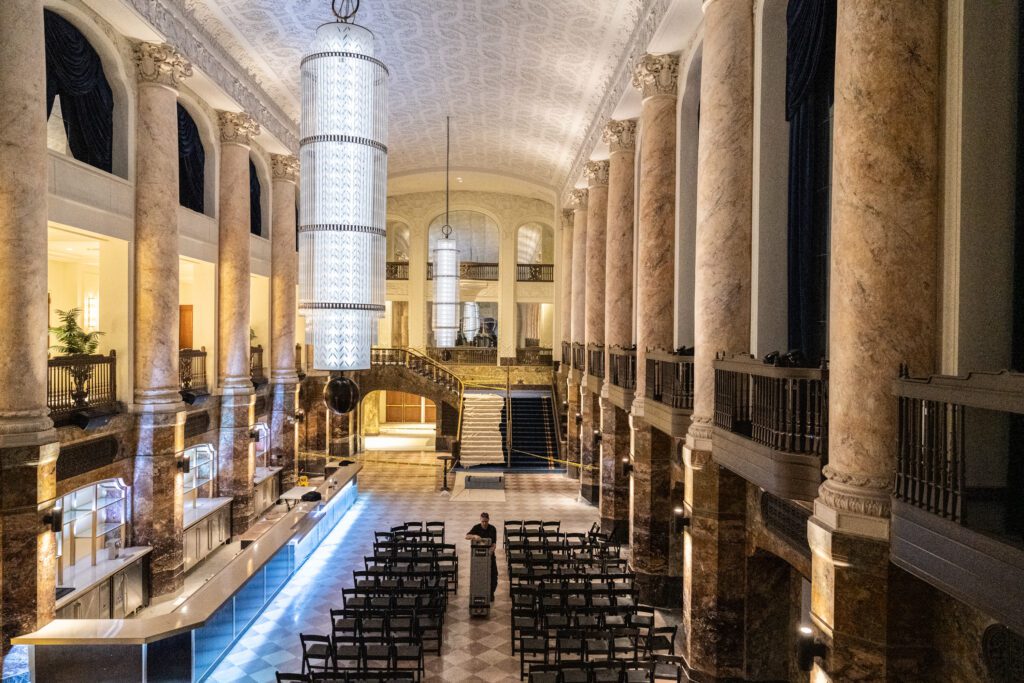

The soaring Paramount lobby and bar space (Photo by Stephanie Keith)
The ooh’s and ah’s don’t stop after leaving the main hall, as every floor and room has some flashy surprise built in. There’s the Ella Fitzgerald VIP lounge, with its old photos of its namesake — who performed multiple times at the Paramount in its early years — and small pink-feathered trees that evoke the Roaring Twenties. The gilded and marbled bar and lobby area feature projectors sitting on small balconies that will create visual patterns on the ceiling (a touch inspired by the Sphere venue in Las Vegas).
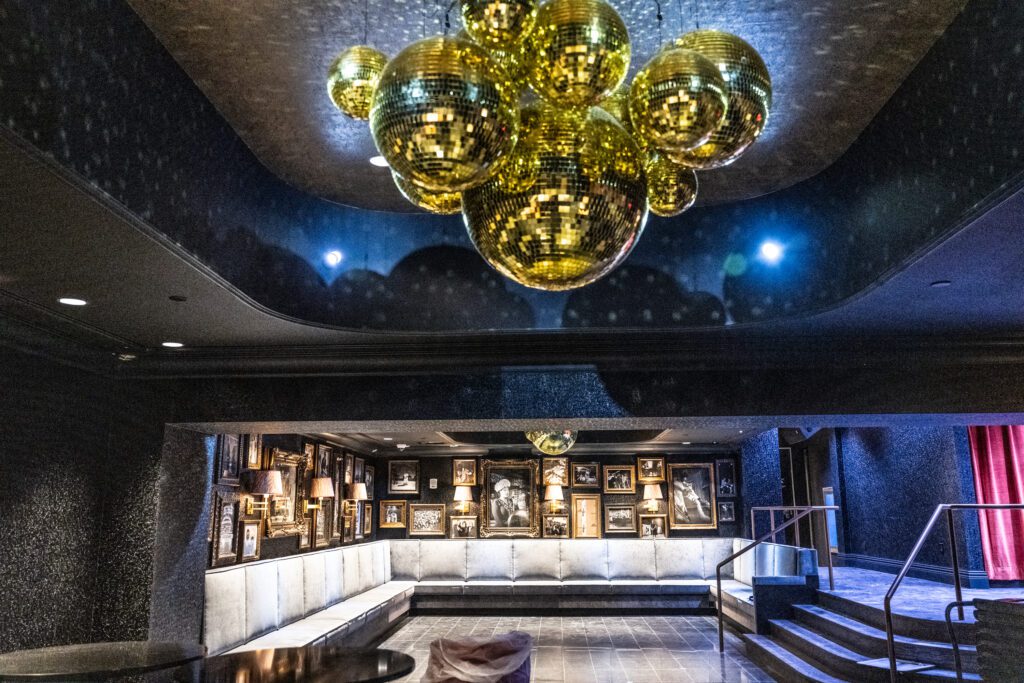

The Ella Fitzgerald lounge (Photo by Stephanie Keith)
The luxurious dressing rooms are decked out with fancy kitchenware and a full bar, along with record players and stacks of vinyl. There’s also a fitness room, a laundry room and a game area. Brooklyn artists, like ESPO, have painted portraits that hang throughout of musicians who performed at the original Paramount, from Buddy Holly to Chubby Checker.
And shockingly, a large amount of the plaster design is original.
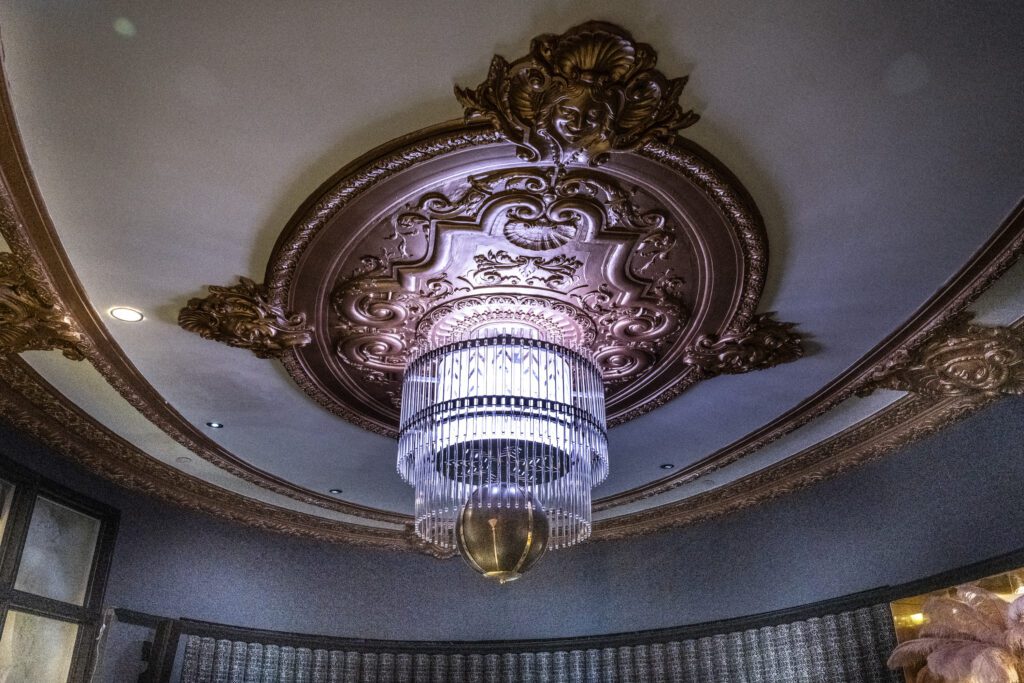

A chandelier at the Paramount (Photo by Stephanie Keith)
“Rapp & Rapp, the original architects, went for full-blown Baroque. They covered every inch of the theater with ornate plaster decoration, most of it gilded and gleaming. We preserved their work and restored some of the building’s original design elements,” says David Codiga, the president of Blueprint Studio, Live Nation’s global design and development team.
While LIU still owns the space, the entertainment behemoth Live Nation is running the show (neither would disclose financial details, but LIU first put the space up for lease in 2015). The building’s proximity to most Brooklyn subway lines made it especially attractive to Live Nation.
Well over 100 shows have already been booked — close to 70 are currently being advertised on the venue’s website — with a very wide range of acts, including some huge names such as Sean Paul, Norah Jones, NOFX, Sting and Liam Gallagher (of Oasis fame). Damian and Stephen Marley, two sons of the late great Bob, kick things off with a show on Wednesday. The crowd capacity is 2,700, all general admission standing room.
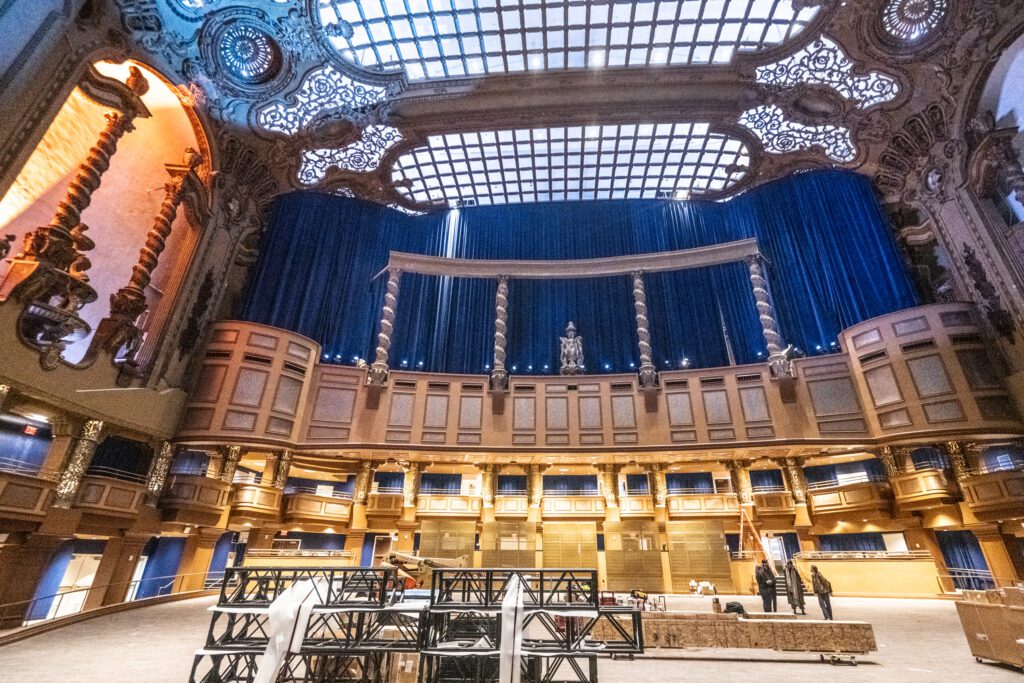

The cavernous audience area (Photo by Stephanie Keith)
Stacie George, a senior vice president at Live Nation who is overseeing the booking process, says that she’s focused on musical diversity, so that the venue draws a diverse set of Brooklyn fans. She points to acts like the Marleys and Trinidadian singer Patrice Roberts, who plays in May, alongside Brooklyn-based indie rockers Diiv, as signs that the tastes of different Brooklyn communities will be represented.
“My job is to make sure that our calendar is all over the map, every genre,” she says. “That the Brooklyn community, especially, is catered to.”
When the Paramount opened in 1928, as a project of the Paramount Pictures movie studio, it was a pioneer in early movie sound. A special-made Wurlitzer 4/26 organ console was built into the base of the building, and it reproduced the sounds of a full orchestra through a series of nearly 2,000 pipes. (The console is still intact, under the stage; Live Nation hopes that its owner, the New York Theatre Organ Society, raises the funds to repair it soon.)
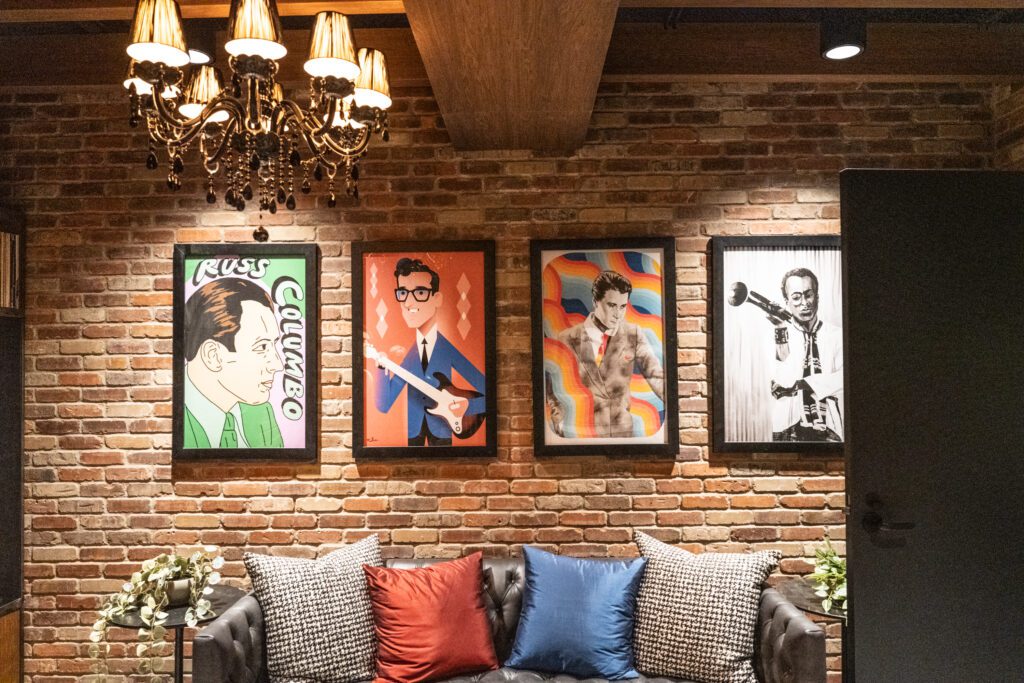

The dressing rooms pay homage to the theater’s past (Photo by Stephanie Keith)
But the theater also quickly began hosting vaudeville shows and concerts, establishing itself as one of the city’s first jazz music venues. Later it was a home for rock ’n roll pioneers. Some of the greats who graced the Paramount stage include Duke Ellington, Miles Davis and Jerry Lee Lewis. Legendary early rock promoter Alan Freed also regularly brought stacked bills to the Paramount stage.
The Great Depression put a damper on the industry, and when the economy recovered, competition sprung up. At one point, Downtown Brooklyn was home to several similar theaters all with the same mission — including the nearby Brooklyn Tabernacle, which is now home to a megachurch.
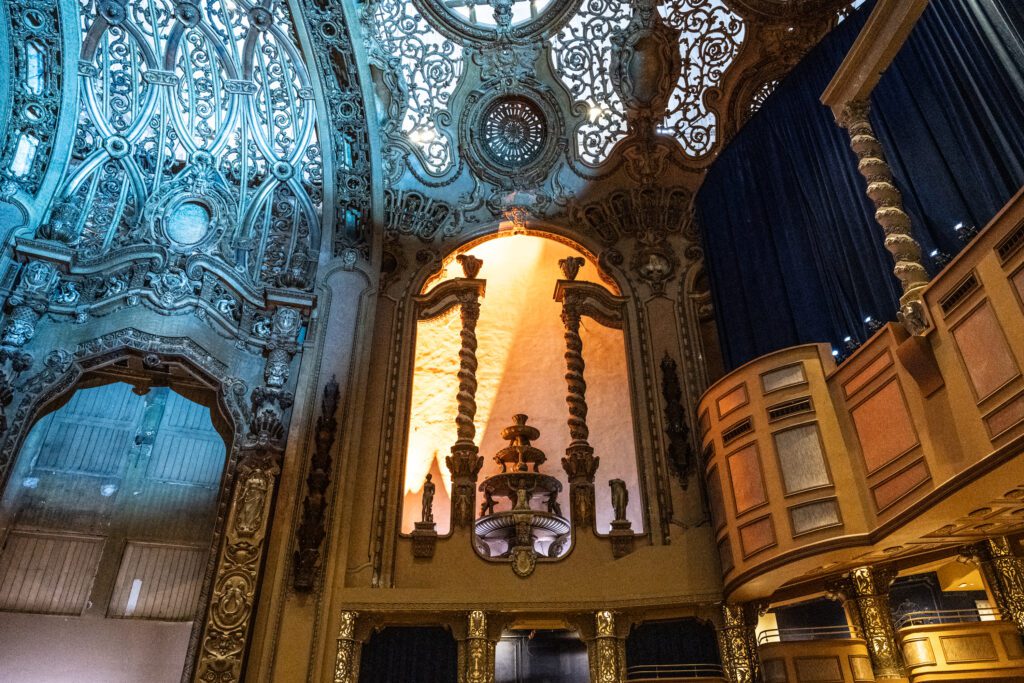

Detail of the Paramount’s interior (Photo by Stephanie Keith)
Beyond the portraits and photographs of the likes of Ella Fitzgerald, Live Nation wants to pay more tribute to the building’s history with future projects and programming. George also wants to eventually book jazz and blues acts; for example, Andre 3000 — the former Outkast star who recently released an experimental, ambient record of flute music — is on her wish list.
“We’ve been intentional on creating a link from the jazz greats of the 30’s to Alan Freed’s’ rock ’n’roll shows in the 1950s to today’s broad range of artists,” Codiga says. “Our mission has been to create a modern showcase in a historic venue, and as appropriate, to evolve it over time.”
You might also like 

















